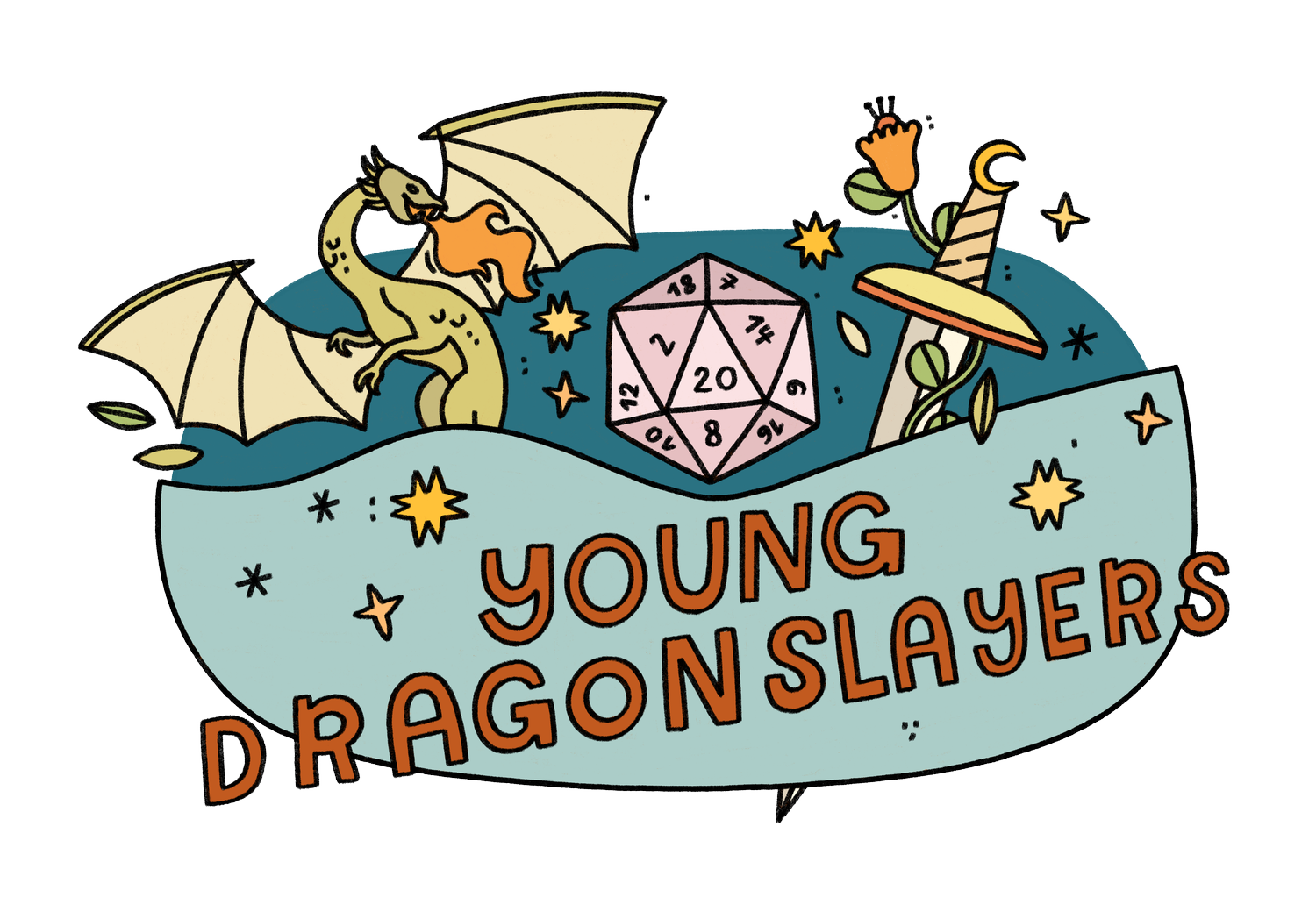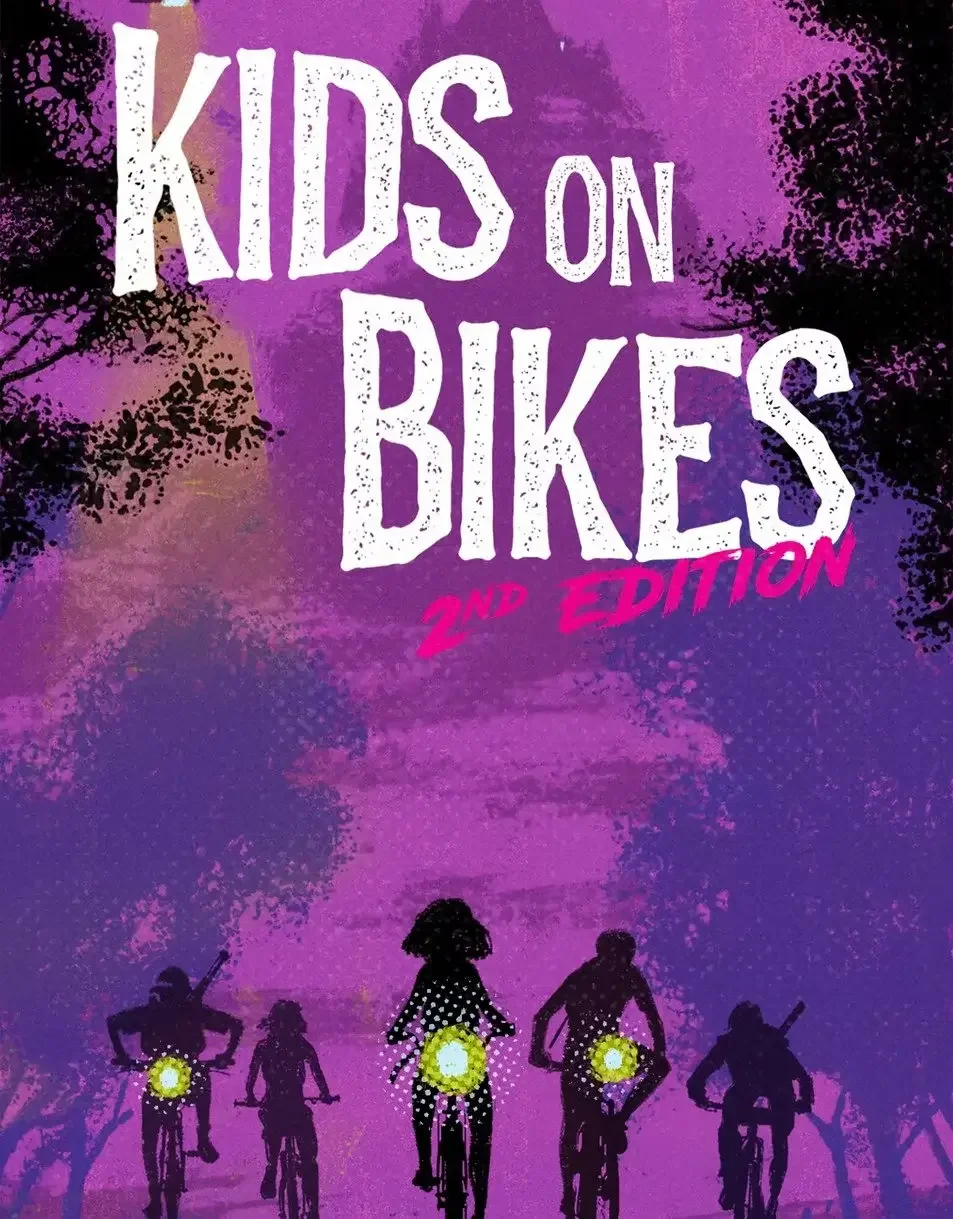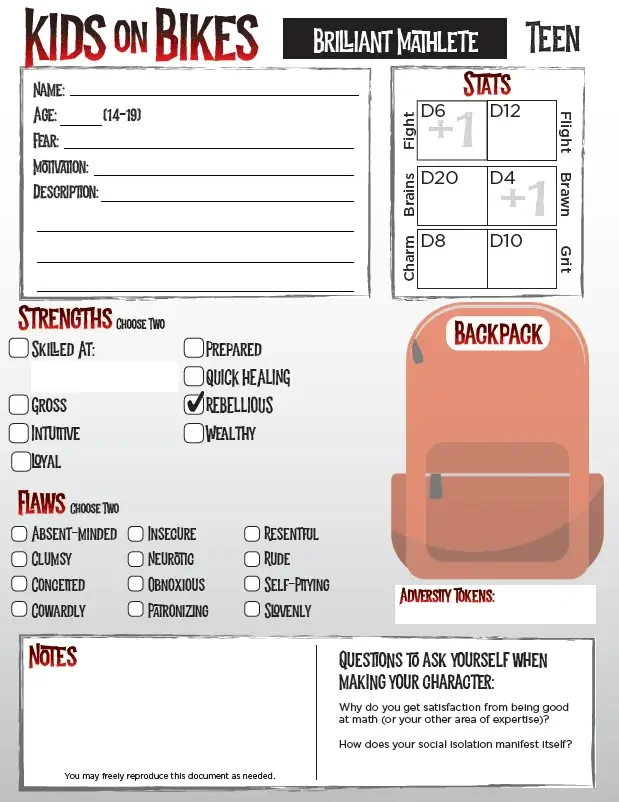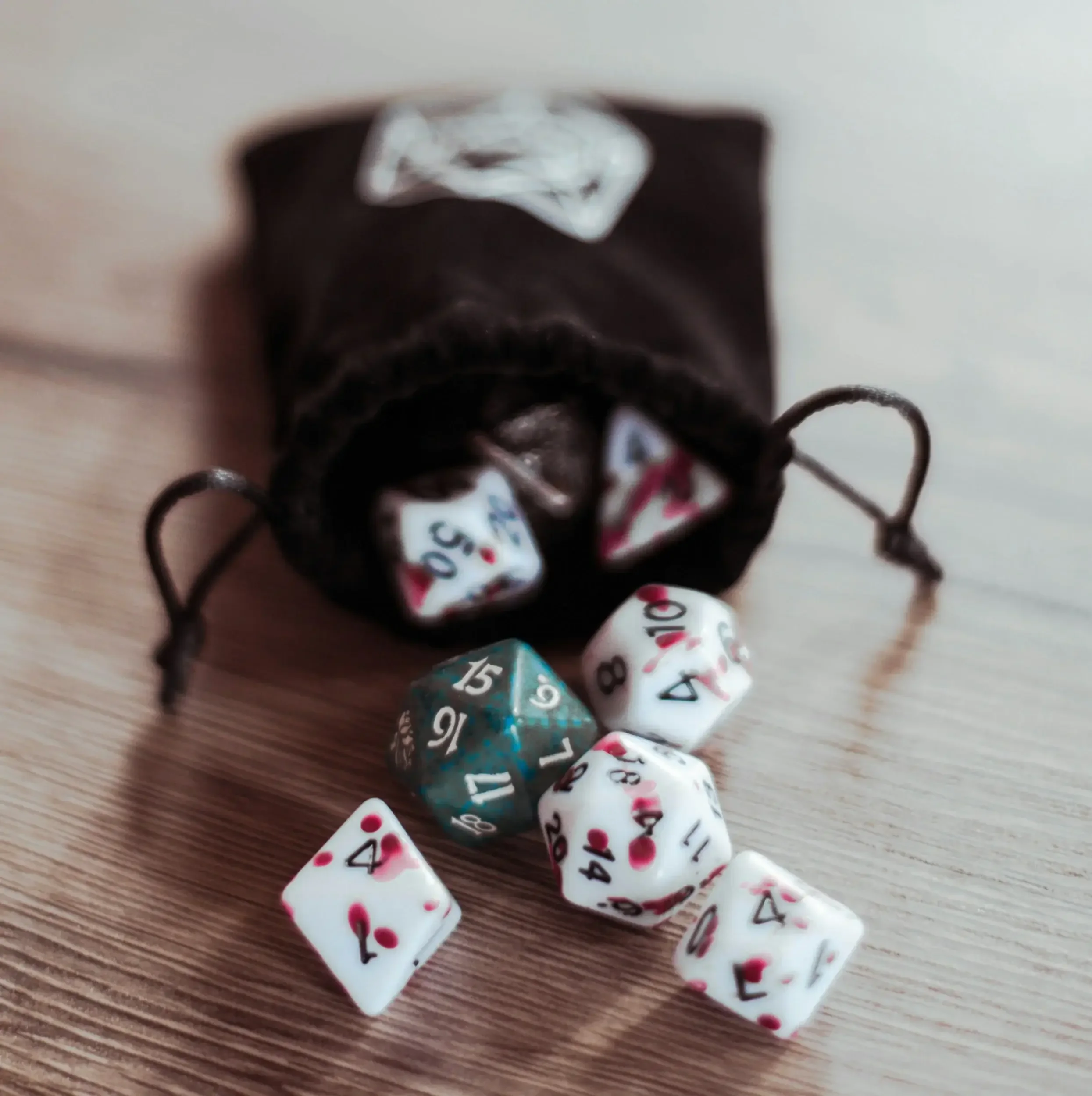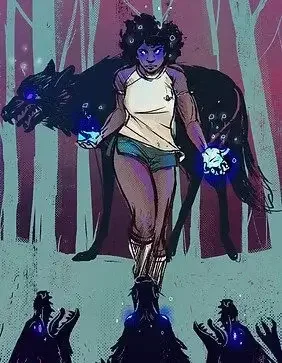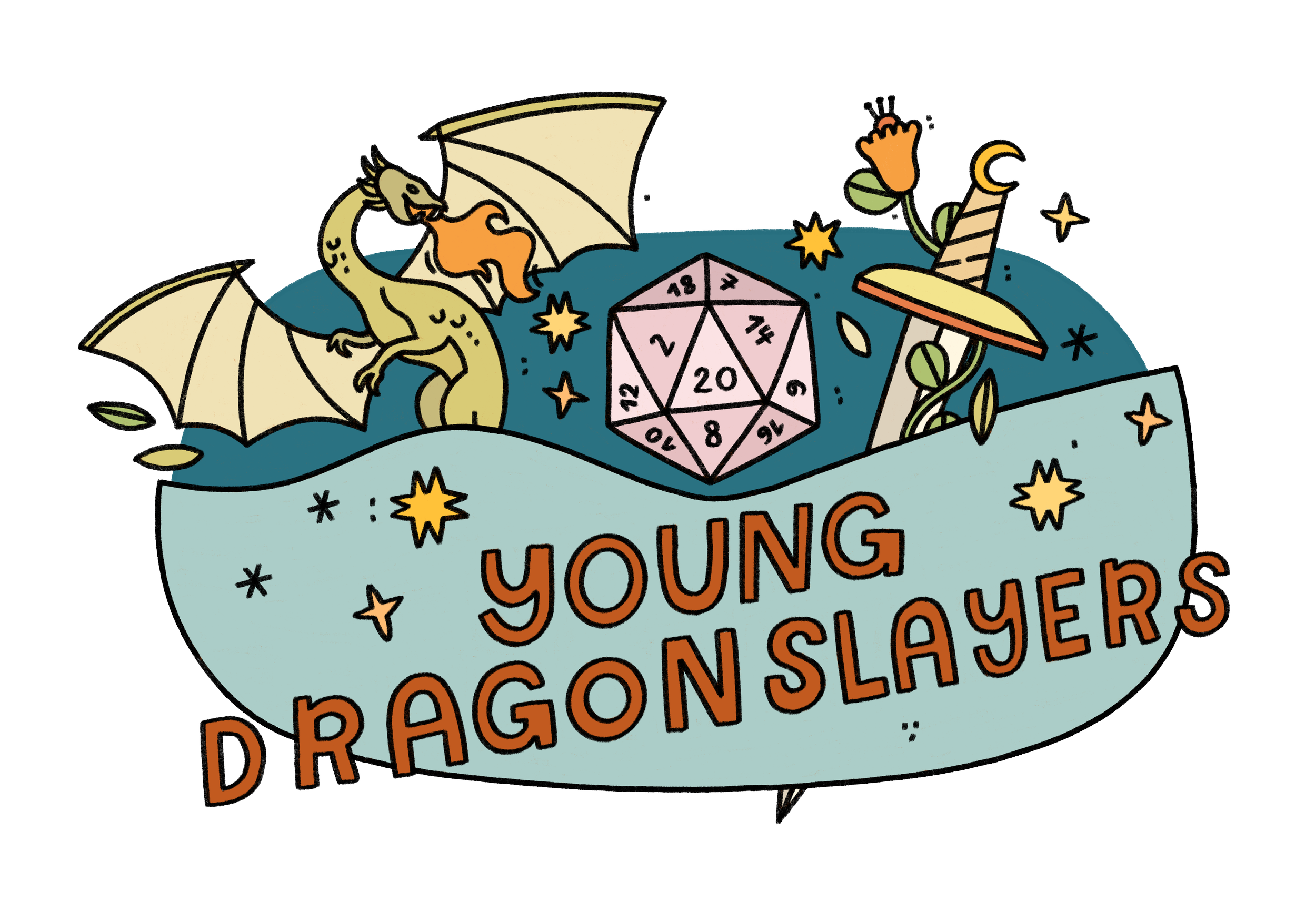Everything You Need To Know About The Kids on Bikes RPG
The Kids on Bikes RPG is a wildly popular tabletop roleplaying game inspired by the show Stranger Things. As more and more people hear about the game, especially from the world of Dungeons & Dragons, they have questions. What’s the Kids on Bikes RPG about? What age is appropriate for a Kids on Bikes game? What is the setting of Kids on Bikes? And, of course, how do you play Kids on Bikes? We’re a crew of professional Game Masters who run games like Kids on Bikes, XCrawl, and D&D for tweens and teens, and we got to sit down with Jonathan Gilmour-Long, co-creator of Kids on Bikes, to hear more about how to play Kids on Bikes.
Note: We only share games and resources we’ve used and/or highly recommend, Kids on Bikes included. If you end up buying Kids on Bikes through the affiliate links on this page, we get a small commission (at no extra cost to you) that goes towards our YDS Scholarships.
What is the Kids on Bikes RPG about?
So Kids on Bikes is inspired by Stranger Things and created by Jonathan Gilmour-Long and Doug Levandowski. But how did the game come to be? We answer that question in more detail in another blog post, but here’s the short version. Both Doug and Jonathan grew up in the 1980’s: biking around, exploring their towns, and playing games like D&D. When Stranger Things came out, they were hooked. “We just both love that child-like sense of wonder about the world and that there's adventure everywhere,” said Jonathan, “Doug had posted ‘Who wants to work on a Stranger Things board game?’ And I messaged him ‘I already started a Stranger Things board game with somebody else, but what about a Stranger Things RPG?’ And he was like, ‘Incredible, that's perfect.’” The setting of Kids on Bikes is meant to inspire that child-like sense of wonder: a small town (that you and your fellow players design together*) without camera phones, GPS, or Google. Kids on Bikes is about a group of people – usually young people, but sometimes adults, too – uncovering supernatural mysteries in said small town, and the challenges they face along the way.
*See the Kids on Bikes Core Rules PDF page 5
Character Creation in Kids on Bikes
Jonathan and Doug wanted to design a game that can get started quickly – no fuss over complicated rules. After struggling to learn D&D in his youth, Jonathan wanted “to design an RPG that I can teach to somebody in 5 minutes and still satisfy what I want, crunch-wise, from an RPG.” So he and Doug built the the Kids on Bikes character creation system* to do just that. Each player picks a different “playbook” – a character trope that will affect a character’s stats, abilities, and more.
On a Kids on Bikes character sheet, each of the six types of polyhedral D&D dice – d4, d6, d8, d10, d12, and d20 – are assigned to the six character stats – Brains, Brawn, Fight, Flight, Charm, and Grit. Each playbook has pre-assigned stats, with a higher-numbered die indicating greater strength in that stat. For example, the Brilliant Mathlete playbook has a d20 Brains and a d4 Brawns, while the Brutish Jock has a d4 Brains and a d20 Brawn. The playbook sheets also let players pick from among several strengths – like Loyal, Prepared, or Rebellious – and flaws – like Cowardly, Insecure, and Rude. From there, players fill out the rest of the details on the sheet – like character motivations, physical description, and relationships within the group – and are quite literally ready to roll!
*See the Kids on Bikes Core Rules page 43
Kids on Bikes Stats, Game, and Rolls
Here’s how those stats work out when rolling in the game. The Kids on Bikes rules call for a each roll to have singular difficulty class (DC)* on a scale from 1 (easy) to 20 (nearly impossible). For example, lifting a 10-pound weight over your head might be a DC 2, while prying open a heavy locked door would be a DC 10, and breaking a school record in track would be a DC 18. The Game Master sets a difficulty class and decides the relevant stat – say, Charm for talking your way out of trouble, Brains for solving a clever puzzle, or Brawn for climbing a fence. Then the player rolls the die associated with that stat – a Brilliant Mathlete would roll a d8 for Charm, a d20 for Brains, and a d4 for Brawn. If the roll is equal to or greater than the DC, they succeed. Or, if the character has time to plan, they can take half the die value instead of rolling (4 for a d8, 10 for a d20, and 2 for a d4). If a character fails, though, it’s not a total loss. Each failure grants the character an Adversity Token, which can be spent to add +1 to future rolls.
But there’s a twist. If the die rolls its maximum value (a 8 on a d8, a 4 on a d4, etc.), it “explodes” – the player gets to roll again and keeps adding numbers! Say the Brilliant Mathlete really needs to climb a fence, and the Game Master has them make a Brawn check with a DC of 10. Even though their Brawn is d4, there’s still a chance! If they roll a 4, the die explodes, and they roll again. If their second roll is another 4, they roll a third time; if that roll is a 2, 4+4+2 = 10, and they make it over the fence!
* See the Kids on Bikes RPG Rulebook PDF page 28
How to Play Kids on Bikes Combat and Powered Characters
True to its Stranger-Things inspiration (alongside, as Jonathan pointed out, The Goonies and Gremlins), the player characters are joined by a powered character a la Eleven, Sloth, or Gizmo. Rather than being a non-player character, or NPC, controlled by the Game Master, control over the powered character is shared among all the players. The Kids on Bike system handles this by giving each player an “aspect” of the powered character to control. This could be a personality trait, like “Sarcastic” or “Ignorant of Social Norms,” a relationship to the group, like “Highly Protective of a Member of the Group” or “Believes the Group has a Special Destiny,” or a psychic powers, like “Able to Create Illusions” or “Able to Know an Object’s History by Touch.” Each of these aspects is written out on an index card and placed in front of the player who controls it. If anybody else thinks a certain aspect should come into play, they reach over and turn that card to the side. The powered character also starts off with 7 Psychic Energy tokens. Whenever a player with a psychic-power aspect tries to use them, they spend one of the tokens and roll to see if they can bust out their power!*
When the characters go toe-to-toe in a fight, it’s time to enter combat. Combat in Kids on Bikes works very similarly to other kinds of scenarios in the game: it all comes down to checks. Everybody gets a roll on their turn to do one action, like landing a punch (Fight), getting out of harm’s way (Flight) or knocking down a pile of bricks (Brawn). If the action involves another character (like the one being punched or the one under the pile of bricks), that character gets a chance to roll in response. They could try to dodge the punch (Flight), shoot the fleeing character (Fight), or try to withstand the falling bricks (Grit).
Instead of damage dice or similar mechanics, the damage dealt is based on how much higher the attacker’s roll is than the defender’s roll.** Say the player character rolls an 8 Fight to punch against a roll of 10 Flight to dodge. Then, the defender’s roll is greater, and they are unharmed. But if the fleeing character rolls a 4 Flight to an attacker’s 7, the attacker’s roll is greater by 3, and the defender is grazed by the bullet. Or if the brick-pushing character rolls a 13 Brawn against the defender's 5 Grit, the attacker's roll is greater by 7, and the defender is knocked out by the bricks. If the attacker’s roll is greater by 10 or more, it’s really rough - the defender will die in a single hit or, at best, be injured for life with a steep hospital bill. Fights have consequences!
*See the Kids on Bikes Core Rulebook PDF page 9
**See the Kids on Bikes Core Rulebook PDF page 36
Play Tabletop Games Online with Us!
All in all, the Kids on Bikes system is an easy-to-pick-up game with lots to offer creative roleplayers, Stranger Things fans, and those who struggle with more complex games like D&D. “I suffered from the problem of not being able to learn how to play [D&D], and that affected me pretty deeply,” Jonathan told us, “I loved playing make-believe my entire life, but all these games had this huge promise of telling a story that I just wasn't able to find.” Growing up in an age without smartphones and the internet, Jonathan just couldn’t find anybody who could teach him to play or resources to help him learn. But that’s since changed, and online D&D clubs like Young Dragonslayers are thriving. Out of curiosity, we asked him what kind of difference having an online group to play with might have made. “I think it would have been huge,” said Jonathan, “I think it would have been incredible to have that kind of structure and friend group.”
If you, too, are in need of structure and a friend group (or if you’ve got your heart set on D&D), Young Dragonslayers might be the place for you. We put tween and teen players in D&D groups based on their experience levels, schedules, and play styles, so there’s no need to go out searching for friends. And we have professional Dungeon Masters who run the games, know the rules, and teach everyone how to play, so there’s a low barrier to entry. Of course, if you’ve already got friends who are interested in a tabletop RPG, we highly recommend picking up Kids on Bikes. Click the buttons below to find out more about the Kids on Bikes RPG and about Young Dragonslayers’ online D&D games!
